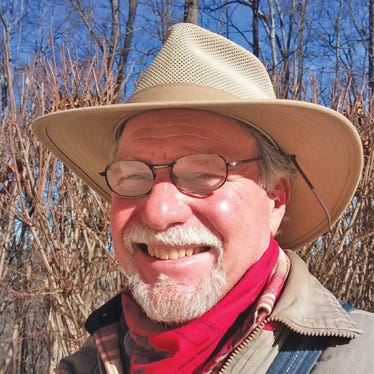
I was visiting on the phone the other Sunday morning with Ray Banister, a well-known buddy of mine from Wibaux, Montana.
West of the Missouri River Bannister is known by some as “Boom-and-Bust Bannister.” This comes from his own moniker for the way he manages grazing.
I was referred to Ray almost a decade ago by Kit Pharo of eastern Colorado when I was questioning him about lengthening the plant recovery to completion before each grazing. Pharo told me that Bannister had been doing that almost forever.

Packed tight: A group of my steers grazes as a densely packed herd right after I move them into a fresh break of grass.
I called Banister and introduced myself and asked him if he had a few minutes to chat. I told him who I was and what I did for a living. He jumped on board and we have been friends ever since.
Further, I was blessed to spend a day in late September, 2011, with him investigating his pastures, cattle and management system. Bannister understands natural systems and does not break the rules. He is stuck on the natural model. He is very opinionated and has reason to be. What he does works.
He teaches that nature always operates with change and extremes. Natural systems have so much complexity built into them that there is little we can do to improve the function. We have worked hard failing to take advantage of what nature does for near free. He says nature is not a “sissy” and Bannister teaches that all systems cycle in boom and bust.
This principle is true all over but is easiest to see on the west side of the Mississippi.
All truly successful operating ecosystems are being controlled and managed by nature and on a regular basis an event will come along and shake the hell out of the entirety - a "bust."
If we have left the cushions in place with our management style then that shaking of the system results in benefits and renewals - a "boom."
Sadly, mankind’s management has a track record of declining those rewards. These failings are due to a lack understanding of natural systems, their complexity and operation. It is time to wake up.
High biomass, or plant tonnage, in front at the cattle is Bannister’s goal. Cattle are his major tool to produce, consume, foul and plant biomass.
Vegetative biomass should be a reflection of sunlight (energy), functional moisture, minerals, organic matter, natural fertilization, and the dynamics of the entire ecosystem community. This community includes cattle for very short time periods at different seasons after the system has recovered, which creates a boom. Cattle are supposed to shake the system and do a deep massage.
The successful planned harvest and marketing of the ecosystem’s excess production of biomass is what a sustainable cattle operation is all about.
Large ruminants such as cattle in high-density herds allow the biomass to feed itself and thrive. This is how nature works. The further we move from this model, the faster the system’s decline.
Our desire is for the cattle to grow, reproduce and do good, at the same time as the soil grows and does good, and as the plant community diversifies, grows and does good.
Weather and time and timing tweak the system and cause that chaos that Bannister talks about.
Following a severe high-density graze, which is nature’s norm, there are several predictable sequences we can see:
1. A surge in legumes and annual grasses and forbs
2. Followed by perennial short and medium grasses, herbs and forbs
3. Followed by perennial tall grasses and forbs
4. Followed by brush
5. Followed by trees if there is enough moisture available
The biomass should be made up of huge numbers of differing plant species. Each one has a reason and niche, weather, season, organic matter, location, and every part of the system plays a part and is important. Nature will tweak every species for the good of the entirety in a properly functioning system.
When the plant species and the land have reached some degree of maximum biomass production, it is time for the cattle to make their entrance in high densities and hard ruthfulness. The results are astounding, then remarkable, beautiful, gratifying and very profitable.
As pastoralists we have only to do a little work and it is good.
About the Author(s)
You May Also Like






